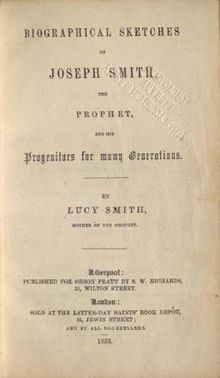
Brigham Young was an American religious leader and politician. He was the second president of the Church of Jesus Christ of Latter-day Saints from 1847 until his death in 1877. During his time as church president, Young led his followers, the Mormon pioneers, west from Nauvoo, Illinois, to the Salt Lake Valley. He founded Salt Lake City and served as the first governor of the Utah Territory. Young also worked to establish the learning institutions that would later become the University of Utah and Brigham Young University. A polygamist, Young had at least 56 wives and 57 children. He formalized the prohibition of black men attaining priesthood, and led the church in the Utah War against the United States.
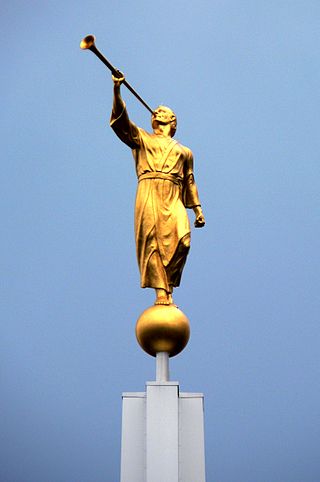
The Angel Moroni is an angel whom Joseph Smith, founder of the Latter Day Saint movement, reported as having visited him on numerous occasions, beginning on September 21, 1823. According to Smith, the angel Moroni was the guardian of the golden plates buried near his home in western New York, which Latter Day Saints believe were the source of the Book of Mormon. An important figure in the theology of the Latter Day Saint movement, Moroni is featured prominently in its architecture and art. Besides Smith, the Three Witnesses and several other witnesses also reported that they saw Moroni in visions in 1829.
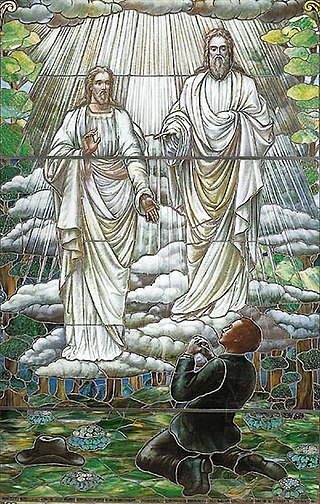
The First Vision refers to a theophany which Latter Day Saints believe Joseph Smith experienced in the early 1820s, in a wooded area in Manchester, New York, called the Sacred Grove. Smith described it as a vision in which he received instruction from God the Father and Jesus Christ.
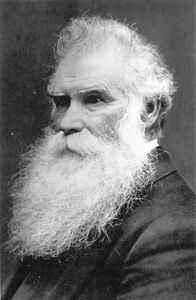
Orson Pratt Sr. was an American religious leader and mathematician who was an original member of the Quorum of the Twelve Apostles of the Church of Christ. He became a member of the Quorum of the Twelve of the Church of Jesus Christ of Latter-day Saints and was a leading Mormon theologian and writer until his death.
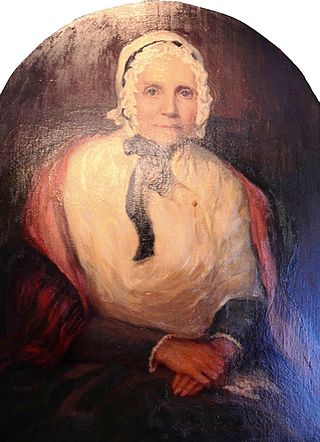
Lucy Mack Smith was the mother of Joseph Smith, founder of the Latter Day Saint movement. She is noted for writing the memoir, Biographical Sketches of Joseph Smith, the Prophet, and His Progenitors for Many Generations and was an important leader of the movement during Joseph's life.
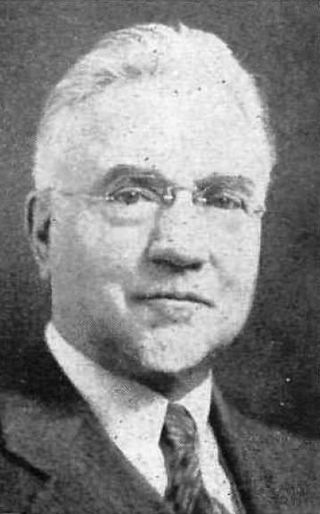
John Andreas Widtsoe was a Norwegian-American scientist, author, and religious leader who was a member of the Quorum of the Twelve Apostles of the Church of Jesus Christ of Latter-day Saints from 1921 until his death in 1952.
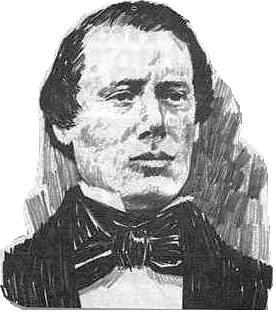
Samuel Harrison Smith was a younger brother of Joseph Smith, founder of the Latter Day Saint movement. Samuel was a leader in his own right and a successful missionary. Smith is commonly regarded as the first Latter Day Saint missionary following the organization of the Church of Christ by his brother, Joseph. One of the Eight Witnesses to the Book of Mormon's golden plates, Samuel Smith remained devoted to his church throughout his life.

Signature Books is an American press specializing in subjects related to Utah, Mormonism, and Western Americana. The company was founded in 1980 by George D. Smith and Scott Kenney and is based in Salt Lake City, Utah. It is majority owned by the Smith-Pettit Foundation.

There are many works relating to Joseph Smith. These works cover Joseph Smith's his life, legacy, and teachings. Smith is the author of several works of scripture, and several personal histories, letters, and other writings. There have also been several biographies written about him.

No Man Knows My History: The Life of Joseph Smith is a 1945 book by Fawn M. Brodie that was one of the first significant non-hagiographic biographies of Joseph Smith, the progenitor of the Latter Day Saint movement. No Man Knows My History was influential in the development of Mormon history as a scholarly field. However, scholars have since criticized the book for its methodological deficiencies, factual errors, and overt hostility to Smith.

Phineas Howe Young was a prominent early convert in the Latter Day Saint movement and was later a Mormon pioneer and a missionary for the Church of Jesus Christ of Latter-day Saints. Phineas Young was an older brother of Brigham Young, who was the president of the LDS Church and the first governor of the Territory of Utah.
Dean Cornell Jessee is a historian of the early Latter Day Saint movement and leading expert on the writings of Joseph Smith Jr.
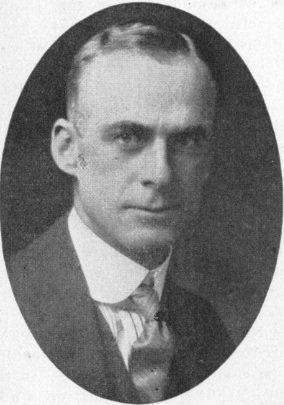
Preston Nibley was an American religious leader in the Church of Jesus Christ of Latter-day Saints, and wrote several books on the church, including several pieces of devotional literature.

This is a chronology of Mormonism. In the late 1820s, Joseph Smith, founder of the Latter Day Saint movement, announced that an angel had given him a set of golden plates engraved with a chronicle of ancient American peoples, which he had a unique gift to translate. In 1830, he published the resulting narratives as the Book of Mormon and founded the Church of Christ in western New York, claiming it to be a restoration of early Christianity.

No, Ma'am, That's Not History is a short work written by Hugh Nibley to criticize Fawn M. Brodie's biography of Joseph Smith, No Man Knows My History. Nibley accuses Brodie of inconsistency and improper historical methodology. Scholars have criticized No, Ma'am for using the same kind of hyperbole that Nibley critiques in Brodie. Nibley's defenders explain that his acerbic satire does use similar rhetorical tools as Brodie does, which is part of its attention-grabbing intent. In 1999, The Salt Lake Tribune said the book "was wildly popular in Utah".

The President of the Church is the highest office of the Church of Jesus Christ of Latter-day Saints. It was the office held by Joseph Smith, the church's founder. The church's president is its leader and the head of the First Presidency, its highest governing body. Latter-day Saints consider the president of the church to be a "prophet, seer, and revelator" and refer to him as "the Prophet", a title that was originally given to Smith. When the name of the president is used by adherents, it is usually prefaced by the title "President". Russell M. Nelson has been the president since January 14, 2018.

Martha Jane Knowlton Coray was an American Mormon pioneer, record keeper, and educator. She was the only female member of the first board of trustees of Brigham Young Academy. Born in Kentucky and raised in Ohio and Illinois, Coray converted to the Church of Jesus Christ of Latter-day Saints as a young woman and moved to the Mormon settlement of Nauvoo. There, she assisted Lucy Mack Smith, the mother of Joseph Smith, in creating a biography of Joseph, later published under the title History of Joseph Smith by His Mother. After crossing the Great Plains alongside other Mormon pioneers, Coray settled in Utah Territory, homesteading in towns such as Tooele and Mona. She helped support her family financially through dairy production, home chemistry, and other crafts. Though she never received formal schooling, Coray studied various topics in her free time and sought to teach her children what she knew. She took an interest in law, becoming involved in local court disputes and political discussions. Towards the end of her life, in 1875, Coray was appointed a member of the first Brigham Young Academy Board of Trustees, the only woman to serve in this capacity at the time. While serving as trustee, she focused her efforts on encouraging education for young women and creating a curriculum of religious education for the academy. Today, the lecture hall in the Karl G. Maeser Building on Brigham Young University's campus bears Coray's name, and the university's 1997 homecoming celebrations honored her achievements.
This is a bibliography of works on the Latter Day Saint movement.
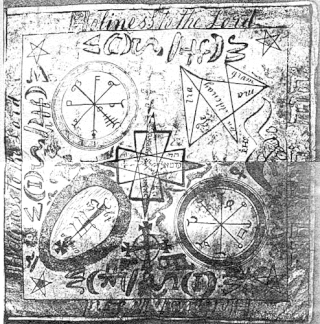
Cunning folk traditions, sometimes referred to as folk magic, were intertwined with the early culture and practice of the Latter Day Saint movement. These traditions were widespread in unorganized religion in the parts of Europe and America where the Latter Day Saint movement began in the 1820s and 1830s. Practices of the culture included folk healing, folk medicine, folk magic, and divination, remnants of which have been incorporated or rejected to varying degrees into the liturgy, culture, and practice of modern Latter Day Saints.
